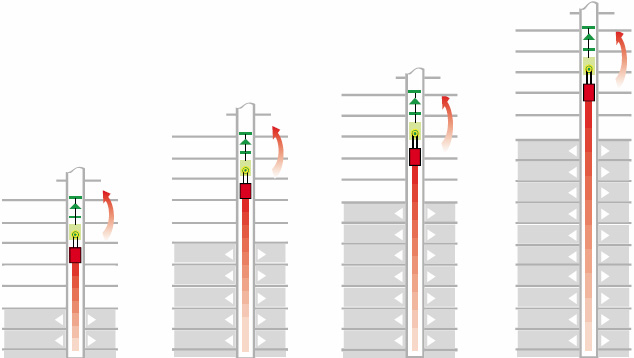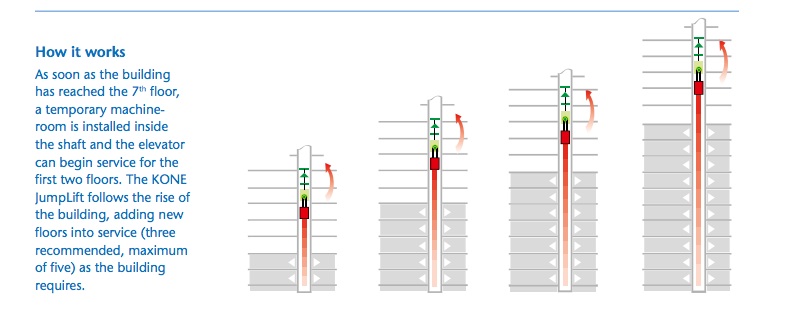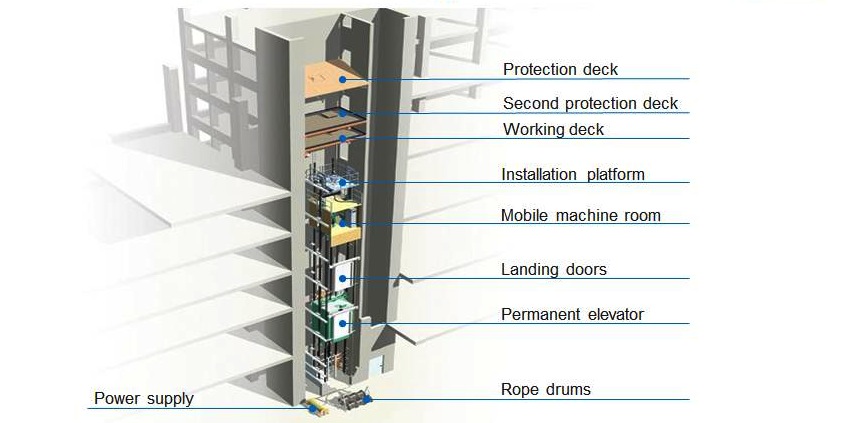Elevator and escalator manufacturer KONE Inc. announced the first North American installation of the company's JumpLift technology. The system is being implemented on the One Bloor project, Great Gulf’s flagship high-rise condominium under construction in Toronto.
KONE JumpLift, which has already been installed in Europe, Asia, the Middle East, China, and Australia, is an advanced, self-climbing elevator that operates during construction in a building’s permanent hoistway. JumpLift uses a mobile machine room that moves upward as the construction progresses.
The technology can improve safety and efficiency on job sites and can enable buildings to be completed months ahead of traditional construction timelines.
Great Gulf and KONE are collaborating on the project, which will deliver high-end retail and residential units in Toronto’s Bloor-Yorkville area, and is expected to be completed in 2016.
The KONE JumpLift technology includes the following benefits:
• Less wait time: Operating at speeds up to 800 fpm (4m/s), five times faster than a traditional external hoist used in construction, KONE JumpLift is able to move construction workers to their floors in a faster, safer way.
• Safer transportation: With all transportation activities taking place inside in a dry and windproof shaft, construction workers can safely move throughout the building regardless of weather conditions, allowing building construction to proceed unhindered.
• Construction efficiency: Using the building’s permanent elevator hoistway for construction use, completed floors can be put into action while allowing the installation to continue above.
• Faster delivery: When the building structure is completed, changing over to the permanent elevator is a straightforward matter of installing the final machinery and finishing the material surfaces of the elevator car, landing doors and signalization.
“Great Gulf always looks for innovation in design and construction. One Bloor, recently recognized by the International Property Awards as the best hi-rise condominium in North America, is one of the most significant buildings being built in Toronto,” said Christopher Wein, President Great Gulf Residential. “The KONE JumpLift provides real value and this elevator technology will help the entire construction project to proceed more efficiently and safely for everyone working on site.”
Related Stories
| Aug 11, 2010
Section Eight Design wins 2009 Open Architecture Challenge for classroom design
Victor, Idaho-based Section Eight Design beat out seven other finalists to win the 2009 Open Architecture Challenge: Classroom, spearheaded by the Open Architecture Network. Section Eight partnered with Teton Valley Community School (TVCS) in Victor to design the classroom of the future. Currently based out of a remodeled house, students at Teton Valley Community School are now one step closer to getting a real classroom.
| Aug 11, 2010
University of Florida aiming for nation’s first LEED Platinum parking garage
If all goes as planned, the University of Florida’s new $20 million Southwest Parking Garage Complex in Gainesville will soon become the first parking facility in the country to earn LEED Platinum status. Designed by the Boca Raton office of PGAL to meet criteria for the highest LEED certification category, the garage complex includes a six-level, 313,000-sf parking garage (927 spaces) and an attached, 10,000-sf, two-story transportation and parking services office building.
| Aug 11, 2010
Draft NIST report on Cowboys practice facility collapse released for public comment
A fabric-covered, steel frame practice facility owned by the National Football League’s Dallas Cowboys collapsed under wind loads significantly less than those required under applicable design standards, according to a report released today for public comment by the Commerce Department's National Institute of Standards and Technology (NIST).









